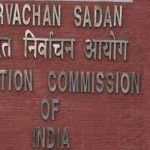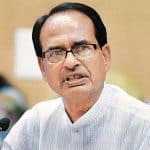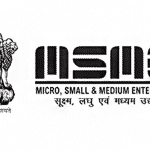Namami Gange Project or Namami Ganga Yojana is an ambitious Union Government Project which integrates the efforts to clean and protect the Ganga river in a comprehensive manner.
- In its maiden budget, the government announced Rs. 2037 crore towards this mission. The project is officially known as Integrated Ganga Conservation Mission project or ‘Namami Ganga Yojana’.
- This project aims at Ganga Rejuvenation by combining the existing ongoing efforts and planning under it to create a concrete action plan for future.
- The government has launched more than 300 projects along the banks of Ganga under the Namami Gange program to clean and protect the 2,500 km long river.
- In addition a sum of Rs. 100 crores has been allocated for developments of Ghats and beautification of River Fronts at Kedarnath, Haridwar, Kanpur, Varanasi, Allahabad, Patna and Delhi in the current financial year.
Significant Project Aspects:
- Over Rs. 20,000 crore has been sanctioned in 2014-2015 budget for the next 5 years.
- Will cover 11 states, 47 towns & 12 rivers under the project.
- Over 1,632 gram panchayats on the banks of Ganga to be made open defecation-free by 2022.
- Several ministries working with nodal Water Resources Ministry for this project include – Environment, Urban Development, Shipping, Tourism & Rural Development Ministries.
- Prime focus will be on involving people living on the river’s banks in this project.
- Under the aegis of National Mission for Clean Ganga (NMCG) & State Programme Management Groups (SPMGs), States and Urban Local Bodies and Panchayati Raj institutions will be involved in this project.
- Setting river centric urban planning process to facilitate better citizen connects, through interventions at Ghats and River fronts.
- Expansion of coverage of sewerage infrastructure in 118 urban habitations on banks of Ganga.
- Enforcement of Ganga specific River Regulatory Zones.
- Development of rational agricultural practices & efficient irrigation methods.
- Setting Ganga Knowledge Centre.
IMPLEMENATION PLAN
- The implementation of the program has been divided into entry-level activities (for immediate visible impact), medium term activities (to be implemented within 5 years of time frame), and, long-term activities (to be implemented within 10 years).
- Entry-level activities include river surface cleaning to address the floating solid wastes; rural sanitation to arrest the pollution (solid & liquid) entering through rural sewage drains and construction of toilets; renovation, modernization, & construction of crematoria that prevents the disposal of un-burnt/ partially burnt bodies in the river; repair, modernization & construction of ghats to improvise the human-river connect.
- Medium-term activities will focus on arresting the municipal and industrial pollution entering into the river. To address the pollution through municipal sewage, 2500 MLD (Million Litres per Day) additional treatment capacity is to be created in next 5 years. Major financial reforms are underway to make the program efficient, accountable, and sustainable in the long term. Hybrid Annuity based Public Private Partnership model for project implementation is currently being considered by the Cabinet. If approved, Special Purpose Vehicle will manage concessionaires in all major cities, market will be developed for treated water, and long term sustainability of assets will be assured.
- For managing the industrial pollution, efforts have been initiated to improvise the compliance through better enforcement. Grossly Polluting Industries located along Ganga have been directed to reduce the effluent quality & volume or implement zero-liquid discharge. Action plan for the implementation of these directions by Pollution Control Boards are already prepared and timelines have been assigned for each category of industry with detailed consultations. All the industries have to install real-time on-line effluent monitoring stations.
Pollution will be checked through
- Treatment of waste water in drains by applying bio-remediation method.
- Treatment of waste water through in-situ treatment.
- Treatment of waste water by the use of pioneering technologies.
- Treatment of waste water through municipal sewage & effluent treatment plants.
- Introducing immediate measures to arrest inflow of sewage.
- Introducing PPP approach for pollution control.
- Introduction of 4-battalion of Territorial Army Ganga Eco-Task Force.
THE COMPLEX NATURE OF GANGA
- Contribution of funds: Restoring the quality of a river with the length and population as large as that of Ganga requires huge investments. Government has already increased the budget by four-fold but still may not be enough to the requirements. Clean Ganga Fund has been established that provides a platform to all for contributing funds to clean river Ganga.
- Reduce, Reuse and Recovery: Majority of us do not realize that used water and filth of our homes can end up in the rivers if not disposed properly. Sewerage infrastructure is already being constructed by the Government but citizens can reduce the usage of water and generation of waste. Reusing and Recovery of used water and organic waste & plastics can greatly benefit the program.
- Deposition of silt after construction of Farakka Dam was the principal reason for swelling of Ganga this year. Chief Minister of Bihar, Mr. Nitish Kumar also said that NAMAMI GANGE will fail without proper Silt Management.











